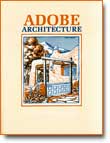 ADOBE ARCHITECTURE
ADOBE ARCHITECTUREA Guide to the Use of Adobe in Building
By Myrtle Stedman & Wilfred Stedman
See INSIDE THE BOOK below. Order from Sunstone: (505) 988-4418 Dreaming of building an adobe home? This classic guide, with floor plans ranging from a small casita to larger ones gives 18 comprehensive period designs for the traditional adobe (the earthern “bricks” used all over the world) house adapted to building materials, plumbing, heating and small lot sizes of today. Thousands of readers have found this a valuable handbook. The authors also venture into actual adobe brick-making, construction techniques, furnishing, even how to make a horno, a traditional Indian oven. Illustrated, detailed diagrams, house plans.
Myrtle Stedman was known as an “Artist in Adobe,” designing, building, and remodeling adobe homes under a contractor’s license. She was also a well-known artist whose academic training started in 1927 when she was a student in the Houston Museum of Fine Arts school. Her English born husband, Wilfred Stedman, whose background was in architecture as well as in painting and illustrating was recognized as one of the most outstanding artists of the American Southwest. Adobe architecture in New Mexico was one of Wilfred’s favorite topics of conversation and Myrtle was instilled with the love of adobes from the moment they were married. After his death in 1950, Myrtle went on to become one of the foremost authorities on adobe construction. Myrtle Stedman was a member of PEN New Mexico, a branch of PEN Center USA West of International PEN and believed that there is no end to what the mind can do with the eye and hand, in time and in spirit. She is also the author of Artists in Adobe, A House Not Made With Hands, Adobe Remodeling and Fireplaces, Of One Mind, Of Things to Come, Ongoing Life, Rural Architecture, The Ups and Downs of Living Alone in Later Life, and The Way Things Are or Could Be, all from Sunstone Press.
“…the most informative book we have found on adobe homes…a masterpiece of design and clear explanation of the craft of building with adobe.”—Harper’s Magazine
Softcover:
eBook:
Hardcover:
ISBN: 978-1-63293-400-0
48 pp.,$29.95
8 1/2 x 11
ISBN: 978-0-86534-111-1
48 pp.,$10.95
ISBN: 978-1-61139272-2
48 pp.,$7.99
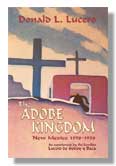 THE ADOBE KINGDOM
THE ADOBE KINGDOM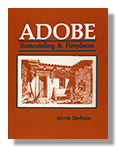 ADOBE REMODELING AND FIREPLACES
ADOBE REMODELING AND FIREPLACES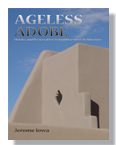 AGELESS ADOBE
AGELESS ADOBE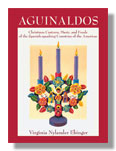 AGUINALDOS
AGUINALDOS ALIAS BILLY THE KID
ALIAS BILLY THE KID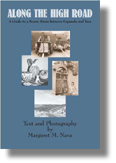 ALONG THE HIGH ROAD
ALONG THE HIGH ROAD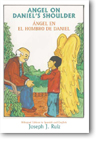 ANGEL ON DANIEL'S SHOULDER
ANGEL ON DANIEL'S SHOULDER ANGELS IN TESUQUE
ANGELS IN TESUQUE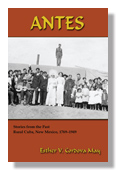 ANTES
ANTES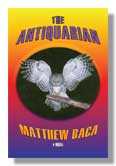 THE ANTIQUARIAN
THE ANTIQUARIAN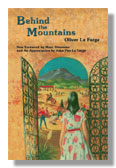 BEHIND THE MOUNTAINS
BEHIND THE MOUNTAINS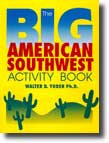 THE BIG AMERICAN SOUTHWEST ACTIVITY BOOK
THE BIG AMERICAN SOUTHWEST ACTIVITY BOOK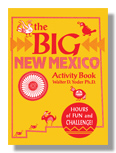 THE BIG NEW MEXICO ACTIVITY BOOK
THE BIG NEW MEXICO ACTIVITY BOOK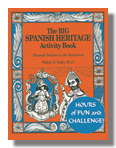 THE BIG SPANISH HERITAGE ACTIVITY BOOK
THE BIG SPANISH HERITAGE ACTIVITY BOOK BUT TIME AND CHANCE
BUT TIME AND CHANCE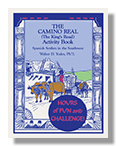 THE CAMINO REAL (THE KING'S ROAD) ACTIVITY BOOK
THE CAMINO REAL (THE KING'S ROAD) ACTIVITY BOOK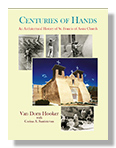 CENTURIES OF HANDS
CENTURIES OF HANDS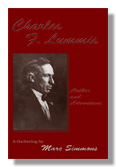 CHARLES F. LUMMIS
CHARLES F. LUMMIS CHILDREN OF DESTINY
CHILDREN OF DESTINY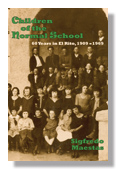 CHILDREN OF THE NORMAL SCHOOL
CHILDREN OF THE NORMAL SCHOOL CHRISTMAS IN OLD SANTA FE
CHRISTMAS IN OLD SANTA FE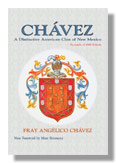 CHÁVEZ
CHÁVEZ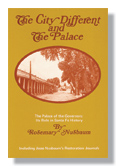 THE CITY DIFFERENT AND THE PALACE
THE CITY DIFFERENT AND THE PALACE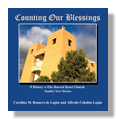 COUNTING OUR BLESSINGS
COUNTING OUR BLESSINGS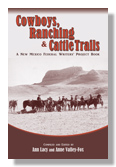 COWBOYS, RANCHING & CATTLE TRAILS
COWBOYS, RANCHING & CATTLE TRAILS CURANDERO
CURANDERO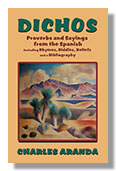 DICHOS
DICHOS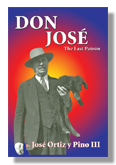 DON JOSÉ, THE LAST PATRON
DON JOSÉ, THE LAST PATRON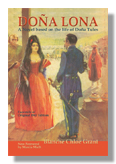 DOÑA LONA
DOÑA LONA EL PAISANO, NUEVO MÉXICO: VIDA Y DILEMA
EL PAISANO, NUEVO MÉXICO: VIDA Y DILEMA THE FALCONER
THE FALCONER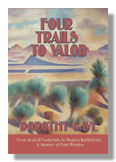 FOUR TRAILS TO VALOR
FOUR TRAILS TO VALOR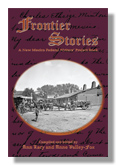 FRONTIER STORIES
FRONTIER STORIES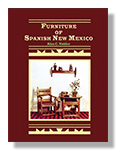 FURNITURE OF SPANISH NEW MEXICO
FURNITURE OF SPANISH NEW MEXICO GENE KLOSS ETCHINGS
GENE KLOSS ETCHINGS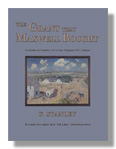 THE GRANT THAT MAXWELL BOUGHT
THE GRANT THAT MAXWELL BOUGHT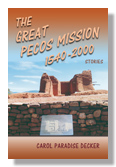 THE GREAT PECOS MISSION, 1540-2000
THE GREAT PECOS MISSION, 1540-2000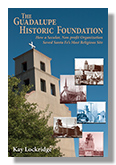 THE GUADALUPE HISTORIC FOUNDATION
THE GUADALUPE HISTORIC FOUNDATION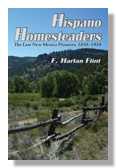 HISPANO HOMESTEADERS
HISPANO HOMESTEADERS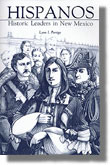 HISPANOS
HISPANOS HISTORIC CATHOLIC CHURCHES ALONG THE RIO GRANDE IN NEW MEXICO
HISTORIC CATHOLIC CHURCHES ALONG THE RIO GRANDE IN NEW MEXICO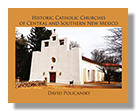 HISTORIC CATHOLIC CHURCHES OF CENTRAL AND SOUTHERN NEW MEXICO
HISTORIC CATHOLIC CHURCHES OF CENTRAL AND SOUTHERN NEW MEXICO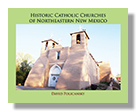 HISTORIC CATHOLIC CHURCHES OF NORTHEASTERN NEW MEXICO
HISTORIC CATHOLIC CHURCHES OF NORTHEASTERN NEW MEXICO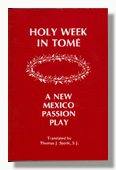 HOLY WEEK IN TOMÉ
HOLY WEEK IN TOMÉ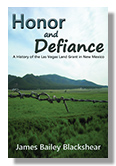 HONOR AND DEFIANCE
HONOR AND DEFIANCE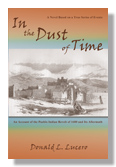 IN THE DUST OF TIME
IN THE DUST OF TIME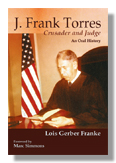 J. FRANK TORRES
J. FRANK TORRES JUAN DE ONATE'S COLONY IN THE WILDERNESS
JUAN DE ONATE'S COLONY IN THE WILDERNESS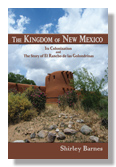 THE KINGDOM OF NEW MEXICO
THE KINGDOM OF NEW MEXICO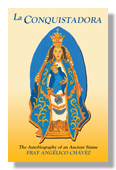 LA CONQUISTADORA / Chavez
LA CONQUISTADORA / Chavez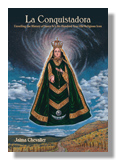 LA CONQUISTADORA / Chevalier
LA CONQUISTADORA / Chevalier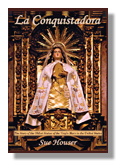 LA CONQUISTADORA / Houser
LA CONQUISTADORA / Houser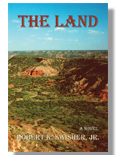 THE LAND
THE LAND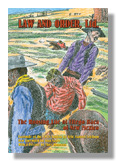 LAW AND ORDER, LTD.
LAW AND ORDER, LTD.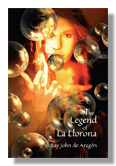 THE LEGEND OF LA LLORONA
THE LEGEND OF LA LLORONA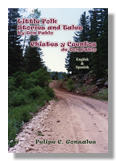 LITTLE FOLK STORIES AND TALES BY DON PABLO
LITTLE FOLK STORIES AND TALES BY DON PABLO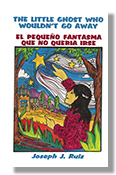 THE LITTLE GHOST WHO WOULDN'T GO AWAY
THE LITTLE GHOST WHO WOULDN'T GO AWAY LITTLE JUAN LEARNS A LESSON
LITTLE JUAN LEARNS A LESSON LIVING LEGENDS OF THE SANTA FE COUNTRY
LIVING LEGENDS OF THE SANTA FE COUNTRY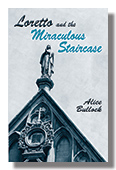 LORETTO AND THE MIRACULOUS STAIRCASE
LORETTO AND THE MIRACULOUS STAIRCASE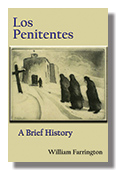 LOS PENITENTES
LOS PENITENTES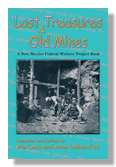 LOST TREASURES & OLD MINES
LOST TREASURES & OLD MINES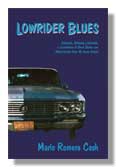 LOWRIDER BLUES
LOWRIDER BLUES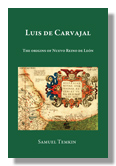 LUIS DE CARVAJAL
LUIS DE CARVAJAL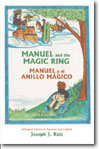 MANUEL AND THE MAGIC RING
MANUEL AND THE MAGIC RING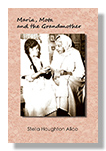 MARIA, MOTA AND THE GRANDMOTHER
MARIA, MOTA AND THE GRANDMOTHER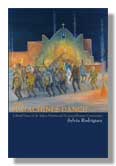 THE MATACHINES DANCE
THE MATACHINES DANCE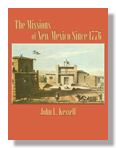 THE MISSIONS OF NEW MEXICO Since 1776
THE MISSIONS OF NEW MEXICO Since 1776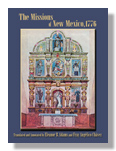 THE MISSIONS OF NEW MEXICO, 1776
THE MISSIONS OF NEW MEXICO, 1776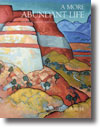 A MORE ABUNDANT LIFE
A MORE ABUNDANT LIFE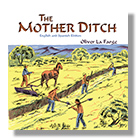 THE MOTHER DITCH
THE MOTHER DITCH MOUNTAIN VILLAGES
MOUNTAIN VILLAGES MOUNTAINS OF THE BLUE STONE
MOUNTAINS OF THE BLUE STONE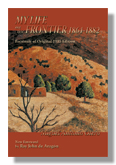 MY LIFE ON THE FRONTIER, 1864-1882
MY LIFE ON THE FRONTIER, 1864-1882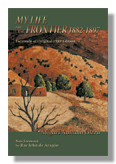 MY LIFE ON THE FRONTIER, 1882-1897
MY LIFE ON THE FRONTIER, 1882-1897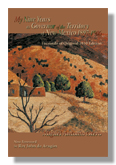 MY NINE YEARS AS GOVERNOR OF THE TERRITORY OF NEW MEXICO, 1897-1906
MY NINE YEARS AS GOVERNOR OF THE TERRITORY OF NEW MEXICO, 1897-1906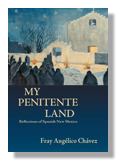 MY PENITENTE LAND
MY PENITENTE LAND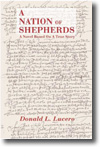 A NATION OF SHEPHERDS
A NATION OF SHEPHERDS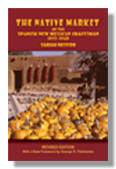 THE NATIVE MARKET OF THE SPANISH NEW MEXICAN CRAFTSMAN, 1933-1940
THE NATIVE MARKET OF THE SPANISH NEW MEXICAN CRAFTSMAN, 1933-1940 NEW MEXICO STORIES
NEW MEXICO STORIES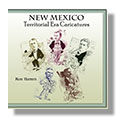 NEW MEXICO TERRITORIAL ERA CARICATURES
NEW MEXICO TERRITORIAL ERA CARICATURES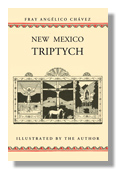 NEW MEXICO TRIPTYCH
NEW MEXICO TRIPTYCH NINA OTERO-WARREN OF SANTA FE
NINA OTERO-WARREN OF SANTA FE NIÑEZ: GAMES, STORIES AND VERSES OF SPANISH CHILDHOOD
NIÑEZ: GAMES, STORIES AND VERSES OF SPANISH CHILDHOOD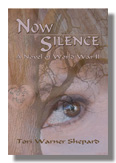 NOW SILENCE
NOW SILENCE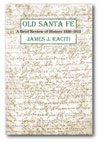 OLD SANTA FE
OLD SANTA FE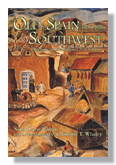 OLD SPAIN IN OUR SOUTHWEST
OLD SPAIN IN OUR SOUTHWEST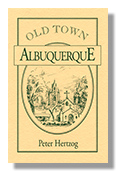 OLD TOWN ALBUQUERQUE
OLD TOWN ALBUQUERQUE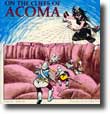 ON THE CLIFFS OF ACOMA
ON THE CLIFFS OF ACOMA ORIGINAL NATIVE NEW MEXICAN COOKING
ORIGINAL NATIVE NEW MEXICAN COOKING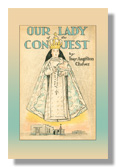 OUR LADY OF THE CONQUEST
OUR LADY OF THE CONQUEST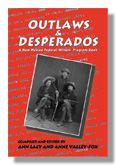 OUTLAWS & DESPERADOS
OUTLAWS & DESPERADOS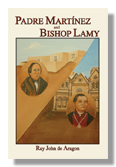 PADRE MARTINEZ AND BISHOP LAMY
PADRE MARTINEZ AND BISHOP LAMY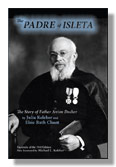 THE PADRE OF ISLETA
THE PADRE OF ISLETA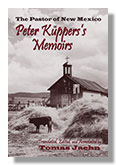 THE PASTOR OF NEW MEXICO
THE PASTOR OF NEW MEXICO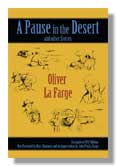 A PAUSE IN THE DESERT
A PAUSE IN THE DESERT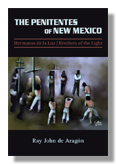 THE PENITENTES OF NEW MEXICO
THE PENITENTES OF NEW MEXICO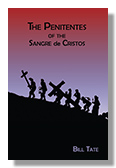 THE PENITENTES OF THE SANGRE DE CRISTOS
THE PENITENTES OF THE SANGRE DE CRISTOS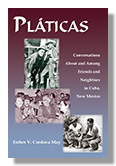 PLÁTICAS
PLÁTICAS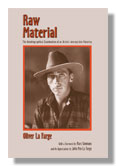 RAW MATERIAL
RAW MATERIAL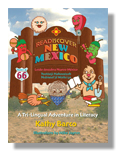 READiscover NEW MEXICO
READiscover NEW MEXICO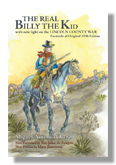 THE REAL BILLY THE KID
THE REAL BILLY THE KID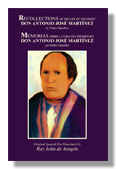 RECOLLECTIONS OF THE LIFE OF THE PRIEST DON ANTONIO JOSE MARTINEZ
RECOLLECTIONS OF THE LIFE OF THE PRIEST DON ANTONIO JOSE MARTINEZ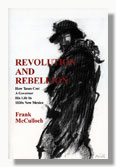 REVOLUTION AND REBELLION
REVOLUTION AND REBELLION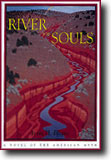 RIVER OF SOULS
RIVER OF SOULS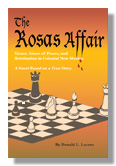 THE ROSAS AFFAIR
THE ROSAS AFFAIR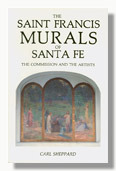 THE SAINT FRANCIS MURALS OF SANTA FE
THE SAINT FRANCIS MURALS OF SANTA FE THE SAINT MAKER’S DAUGHTER
THE SAINT MAKER’S DAUGHTER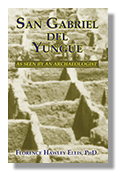 SAN GABRIEL DEL YUNGUE
SAN GABRIEL DEL YUNGUE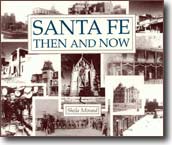 SANTA FE THEN AND NOW
SANTA FE THEN AND NOW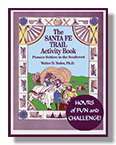 THE SANTA FE TRAIL ACTIVITY BOOK
THE SANTA FE TRAIL ACTIVITY BOOK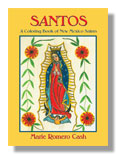 SANTOS
SANTOS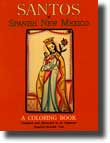 SANTOS OF SPANISH NEW MEXICO
SANTOS OF SPANISH NEW MEXICO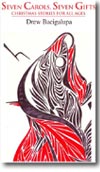 SEVEN CAROLS, SEVEN GIFTS
SEVEN CAROLS, SEVEN GIFTS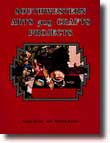 SOUTHWESTERN ARTS & CRAFTS PROJECTS
SOUTHWESTERN ARTS & CRAFTS PROJECTS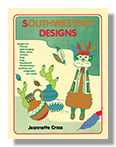 SOUTHWESTERN DESIGNS
SOUTHWESTERN DESIGNS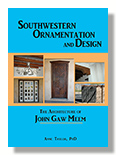 SOUTHWESTERN ORNAMENTATION AND DESIGN
SOUTHWESTERN ORNAMENTATION AND DESIGN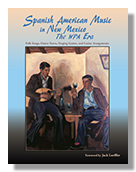 SPANISH AMERICAN MUSIC IN NEW MEXICO, THE WPA ERA
SPANISH AMERICAN MUSIC IN NEW MEXICO, THE WPA ERA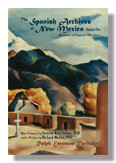 THE SPANISH ARCHIVES OF NEW MEXICO, VOLUME ONE
THE SPANISH ARCHIVES OF NEW MEXICO, VOLUME ONE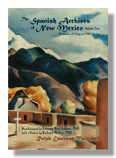 THE SPANISH ARCHIVES OF NEW MEXICO, VOLUME TWO
THE SPANISH ARCHIVES OF NEW MEXICO, VOLUME TWO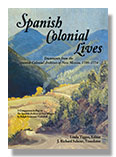 SPANISH COLONIAL LIVES
SPANISH COLONIAL LIVES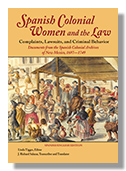 SPANISH COLONIAL WOMEN AND THE LAW: COMPLAINTS, LAWSUITS, AND CRIMINAL BEHAVIOR
SPANISH COLONIAL WOMEN AND THE LAW: COMPLAINTS, LAWSUITS, AND CRIMINAL BEHAVIOR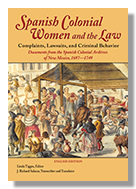 SPANISH COLONIAL WOMEN AND THE LAW: COMPLAINTS, LAWSUITS, AND CRIMINAL BEHAVIOR (ENGLISH EDITION)
SPANISH COLONIAL WOMEN AND THE LAW: COMPLAINTS, LAWSUITS, AND CRIMINAL BEHAVIOR (ENGLISH EDITION) SPANISH RIDDLES AND COLCHA DESIGNS
SPANISH RIDDLES AND COLCHA DESIGNS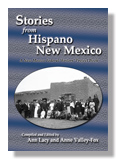 STORIES FROM HISPANO NEW MEXICO
STORIES FROM HISPANO NEW MEXICO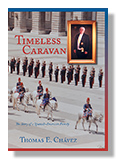 TIMELESS CARAVAN
TIMELESS CARAVAN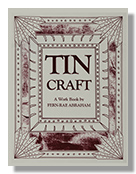 TIN CRAFT
TIN CRAFT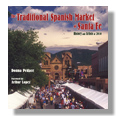 THE TRADITIONAL SPANISH MARKET OF SANTA FE
THE TRADITIONAL SPANISH MARKET OF SANTA FE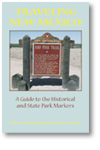 TRAVELING NEW MEXICO
TRAVELING NEW MEXICO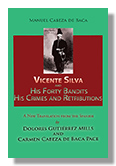 VICENTE SILVA AND HIS FORTY BANDITS, HIS CRIMES AND RETRIBUTIONS
VICENTE SILVA AND HIS FORTY BANDITS, HIS CRIMES AND RETRIBUTIONS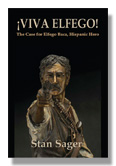 VIVA ELFEGO
VIVA ELFEGO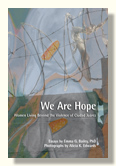 WE ARE HOPE
WE ARE HOPE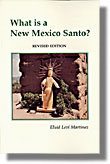 WHAT IS A NEW MEXICO SANTO?
WHAT IS A NEW MEXICO SANTO?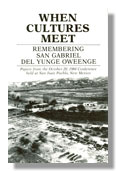 WHEN CULTURES MEET
WHEN CULTURES MEET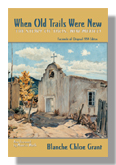 WHEN OLD TRAILS WERE NEW
WHEN OLD TRAILS WERE NEW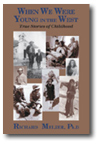 WHEN WE WERE YOUNG IN THE WEST
WHEN WE WERE YOUNG IN THE WEST YESTERDAY IN SANTA FE
YESTERDAY IN SANTA FE